5 cars posting big gains despite a slow market
The Hagerty Price Guide is updated quarterly, and our methodology for tracking collector car values takes into account many factors, from auctions to private sales. For a better understanding of how we put it all together, check out this article.
Summer has turned to fall, and those of us in northern states are already thinking of the long winter to come and reluctantly planning for seasonal storage of our collector cars. Taking stock of the past three months, it’s safe to say that summer 2023 was an active one in the collector car market. We observed the second-strongest Monterey auctions of all time, as well as in-person and online auctions turning out a steady stream of sales. But like the crisp fall weather, the market has been cooling overall and showing signs of change.
And yet, despite this slowing, we observed several cars that posted notable gains over the course of the summer. Although the selection looks much different from over a year ago, there is still plenty to analyze. Here are five of the most substantial gainers in the latest edition of our price guide.
1955–58 Studebaker President: +70%
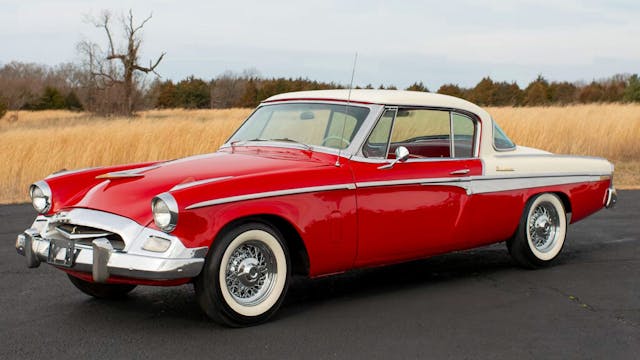
Studebaker Presidents posted a 70 percent uptick in value over the past few months. While the brand may not be as popular as many of its contemporaries, it was for a time one of the oldest and most respected car manufacturers in the U.S. By the 1950s, however, Studebaker was losing major market share to the Big Three, finally breathing its last in late 1963. For the 1950s, the President was the brand’s top-of-the-line model and offered better amenities than its Commander and Champion stablemates.
The rise of the President has been driven primarily by a surge of cars coming to market recently, all of which sold or were offered above prices we’ve previously tracked. A secondary driver (these are still low-volume cars in the grand scheme) is that these cars kept quiet while other American cars of the 1950s saw a renaissance in the market a few years ago. Studebakers just didn’t get the same surge that Chevys, Cadillacs, Fords and other well-known cars from the era enjoyed, and now President prices are playing catch-up. Studebaker is still a challenging marque to call: sales prices are high, but asking prices are even higher. This is where it is important to remember that asking prices do not equate to sale prices, and the longer a car sits on the market, the more apparent it becomes that the expectation of seller and potential buyer aren’t aligning. Regardless, it’s abundantly clear that if you thought Studebakers would be lost to time and ignored, the market begs to differ.
1982–85 Renault Fuego: +57%
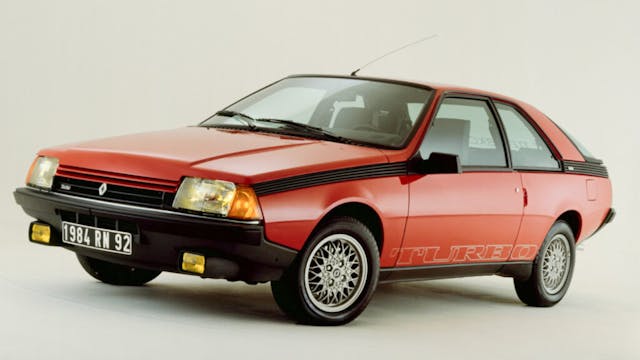
There are two groups of people looking at the Fuego. One is thinking, “I vaguely remember this car and I vaguely remember there being a good reason they stopped selling them here.” The other is thinking, “Wait, they sold a Renault here?” That’s right, folks, Renault sold cars in America for a hot second, but their Frenchness never really caught on. (Peugeot tried and failed, too.)
Sold through AMC dealers, Fuegos were small, fuel-efficient economy cars that actually looked pretty good. If you squint at one, it looks like some inspiration came from some of Citroën‘s better designs. But economy and looks couldn’t save the car from dismal sales, with just under 100,000 units sold in three years.
OK, so these are not particularly well remembered or common. But today they are cheap. You can still buy a nice one for under $15,000, and that’s a “really gotta have it” price. Unbelievably, however, not long ago you’d be nuts to pay more than a couple grand for one. (A big percentage gain on a cheap car still equates to an affordable purchase.) Fuegos experienced no real market value change for many years, so the moving market is having a visible effect here. We can only conclude that post-pandemic increases have effectively filtered into every level of the market—even cheap, forgotten French cars.
1970–72 Pontiac Firebird Formula: +36%
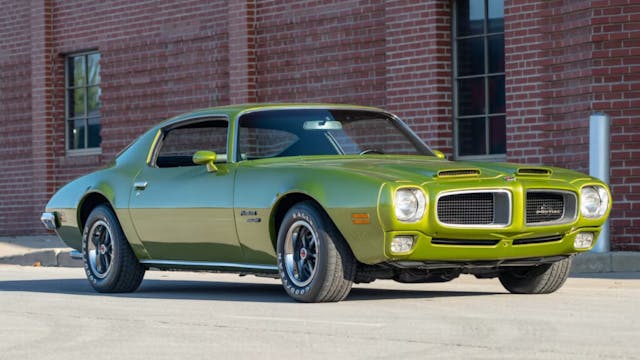
Second-generation Trans Ams are now bonafide automotive stars of the 1970s, from the early white-and-blue cars to the later “screaming chickens” of the Smokey and the Bandit era. But imagine, if you will, being a buyer in the early ’70s: you want all the punch of a Trans Am, but you’d rather not be goaded into drag racing by every kid at a stoplight because they know what you have. Well, Pontiac had just the right sleeper for you. The Formula 400 and 455 offered a more adult aesthetic with all the power of the T/A.
Though the general public took a long time to catch on, Pontiac aficionados have always known that the high-horsepower Formulas are much rarer than their flashier siblings, but still less expensive than the T/A. That changed this summer when a well-equipped 1971 Formula 455 HO sold on Bring A Trailer for huge money, even exceeding the values of a comparable T/A. Before we celebrate too hastily, it is important to remember that another Formula 455 HO sold on the same site in April for a much more modest price. This is a good reminder that single sales should call our attention to a potential market evolution, but they don’t dictate our view of the market—and it may not be the Formula’s time to pass the Trans Am in value. That said, we’ll be watching these cars, as the ones equipped with the same engine have rapidly closed the gap.
1986–93 Buick Riviera: +30%
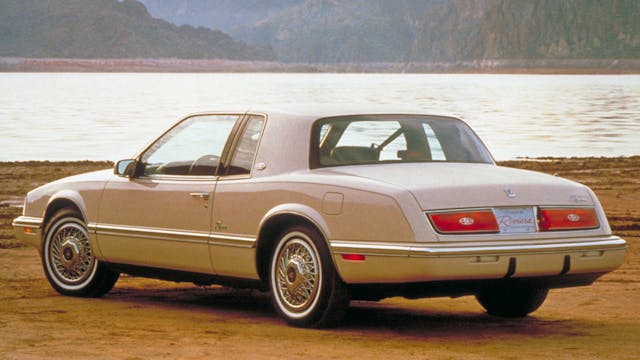
Here’s another one we rarely discuss, the 1986–93 Buick Riviera. The Riv has always been Buick’s top-tier personal luxury model. Unfortunately, while the Riviera started out as a sporty model with a long list of luxury appointments, the 1980s saw a bigger focus on luxury, and less on sporty. The fire-breathing V-8s from the early days were gone, replaced by a transverse-mounted 3.8-liter V-6 engine. Sure, they offered a T-Type version, but before you get excited, this one didn’t have a turbocharger like the Regal-based T-Types. These were the darkest of the dark times with respect to the cars GM was willing to force onto the public.
Were these really that boring? Certain car enthusiasts would be quick to respond, “Hell yes, they were.” But let’s take a step back for a minute. Anyone who has ridden in an ’80s Buick, Oldsmobile, or Cadillac will confirm that the seats are some of the most comfortable ever put into a car, and the digital dash and climate display in the Riviera is cool even by today’s standards… as long as it’s working. This might be a reach for some, but not all that was previously uncool is still completely uncool, especially at the price point of these cars. The nicest one on the planet is still a sub-$20,000 car, and even with a 90 percent increase to our condition #3 (Good) values on these, $10,000 will get you a clean example you’d like to own. Whether you agree or not that these Buicks deserve a seat at the table with the other collector cars, it’s clear they’re no longer cheap used fare.
1968–72 Oldsmobile Vista Cruiser: +30%
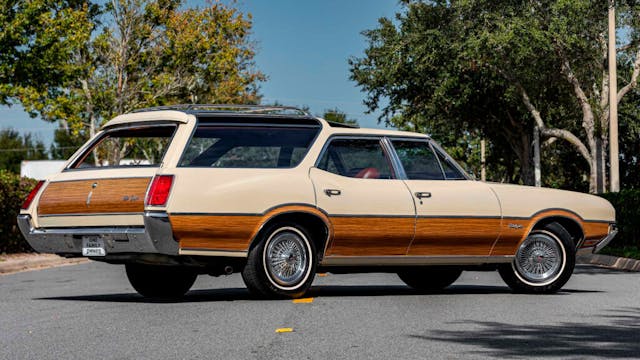
There’s no denying the surge in popularity that station wagons have seen over the past few years. Once as mundane as a minivan, the classic wagon has evolved to hold a sort of cult appeal. Not quite to the hipster levels of the Volvo 240, or to the sport wagon fury furthered by models like the CTS-V and Audi Avants, but there’s been a collective shift for many that these are cooler than people remembered.
Oldsmobile’s contribution to the wagon scene in the form of the Cutlass-based Vista Cruiser is an especially unique entry. Where the Vista Cruiser especially stands out is with the unique Vista Roof offering better views and improved lighting to passengers via additional windows in the roofline. Think of it as Oldsmobile’s take on a 21-window Volkswagen Microbus.
Clean wagons are especially hard to come by, as attrition from daily use and lack of initial collectibility saw many discarded rather than saved when they came to the end of their service life. Over the past few years, however, we’ve noticed wagon prices steadily climb to the point where, in plenty of cases, their values sit close to or above those of their comparable two-door siblings. In the case of the Vista Cruiser, the reason behind the spike in value likely has a lot more to do with it catching up with the market versus being a true breakout. It’s very likely we will see a leveling out of values from this point rather than their continued rise.
***
Check out the Hagerty Media homepage so you don’t miss a single story, or better yet, bookmark it. To get our best stories delivered right to your inbox, subscribe to our newsletters.
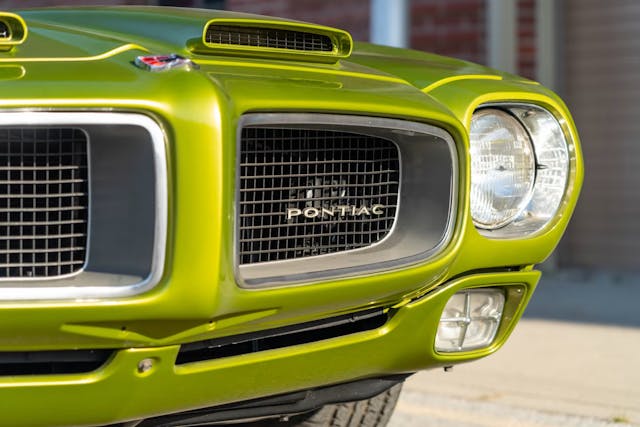


Had a 66 Vista cruiser. It was a great car for a family with 6 children. We stacked them across the back like
cord wood. All were comfortable and trips to see grandma went well.
Someone has to ask…..Did Grandma ever ride on the roof??
Once again, BaT ruins the market for everyone else.
That ’70s Show made the Oldsmobile Vista Cruiser a cult legend. This monster from the late 1960s thru the early 1970s says so much about American family culture i was chosen as the car for the 70s Show. Indeed a cult classic.
Our family had a 1965 Buick Sport Wagon (roof glass like the Vista Cruiser but sleeker design) with the 350 cid engine and four barrel carb. A very handsome and fast car. Probably much rarer today than the Vista Cruiser, as they weren’t made as long.
I will not understand Fuego love. What a crap car.
There were turbocharged Rivieras. Same power train as turbo Regals (NOT Grand Nationals). Turbochargers were identical except we sorted for the best balanced (quietest) ones and assigned a different P/N to those – that P/N was for Rivieras. It’s been too long and I’m too old to remember what % were assigned as Riviera P/N.
Also the Riviera turbochargers were the first to have the turbine housing and waste gate elbows coated by Sermetel for under hood aesthetics; later all the turbos for Buick received the treatment (except GNs – they had an isolated SS cover.
Any molars for collecting
What an eclectic list. Not too often that a 455 Firebird ends up in the same article as a Renault. The popularity of the Vista Cruiser can be traced to two things. One, it was the family car on That 70’s Show and so people were reminded of it. Second, and more important in my opinion, is the fact that this car was based off the Cutlass, as was a more familiar bona fide muscle car that you might recall. The availability of reproductiion 442 parts (hoods with scoops, striping kits, rally wheels, etc) that fit on the Vista Cruiser make for a way-cool build. You can look out the windshield over the hood scoops and believe you are driving a 442 while still having the room to haul the family and all the necessary cargo to the beach or to the park for a family picnic, etc., and for a hell of a lot less than it costs to buy a real 442. The same could not be said for an Olds Custom Cruiser, which was the wagon based on the luxury Olds 98.
1972 My father traded in his 68 Gutless for a brand spanking new Vista. Family was a growing. We lived in the north country and it was my little sisters BDay. I was six and she was 5. Well, as the parents were getting all the girls dressed and ready to take them all somewhere, Dad went out and started the car to “warm” it up. Then went back in the house. I slipped outside and hopped into the front seat and proceeded to hammer on the gas making some sweet hotrod sounds! Pops came out and yanked me right out of that seat and proceeded to whoop my butt right in front of all the ladies I thought I was shownin’ off to! How embarrassing! Needless to say, I never got to sit in the front after that. In fact I was stuck in the way back, rear facing seat, just waiting to get rear ended!! Oh my, the good old days! Thanks for this post it brought that memory back for me!! We never did get rear ended, lucky for me!
Growing up my family owned every generation Riviera there was, except for 74-76, which was techically the same as a 71-73 without the boat tail. I had a 67, 83, 90 and 95, my dad owned 63’s, 69, 71, 73, 84 and an 85. My Sister had the 77 and later 85. Out of all of those cars my favorite was my 1990, the BOSE radio, moon-roof, 2 tone, aluminum factory wheels, with a ride and seats that were second to none. If I could find another that was equipped the same I might be tempted to buy another. But I have too many cars now and something would need to go.
Also, the Renault Dauphin was a good car.
Totally forgot about the Dauphin, but then thought some more about Renaults in Canada and remembered how well the Le Car model did in road tests of the time. Brother-in-law had one and he thought the world of it. Headroom was incredible.
I was shocked to see a Studebaker top any Hagerty list. I still have the 1955 President State sedan that has been in my family since new and know of three others in the region. I’ve owned one other similar sedan as well as a hardtop like the one pictured as well as two 1956 President two-door sedans (1,912 produced). Resale value doesn’t concern me, but I appreciate the recognition of my particular model.
The resemblance of the 1955 Studebaker President to the 1953 Starliner is uncanny. I saw the latter at the Studebaker National Museum in South Bend and am still in awe of its beauty. Lowey was a genius designer.
Re: Firebird body gaps- there was no mandatory drug testing at G.M. during the 70s!